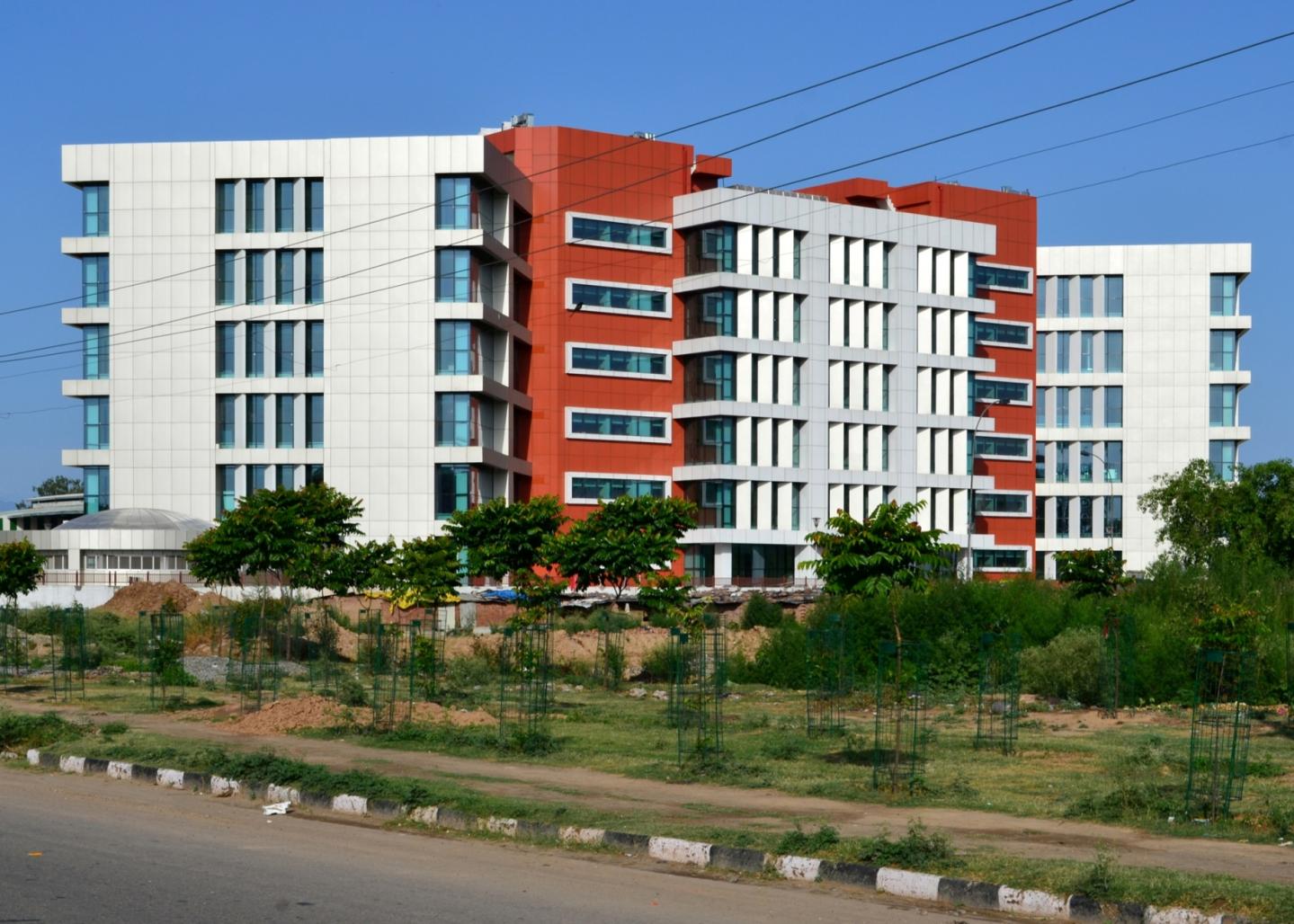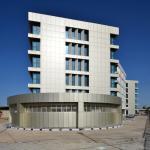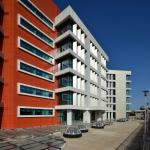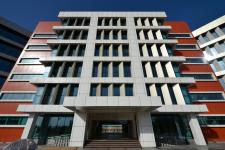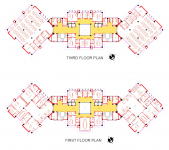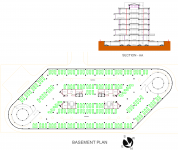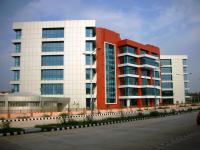Punjab State Agricultural Marketing Board is a semi-government corporate body established in 1961 with an objective to control and supervise the marketing network of sale, purchase, storage and processing of agriculture produce in the state. It is also a local authority with power to acquire, hold and sell property.
Presently the Board is functioning from its own head office building in Sector-17, Chandigarh. With the growth of its activities and increase in staff strength, its office space became inadequate. More so there is acute shortage of parking space around it. The Board thus decided to construct its bigger and efficient corporate office building in Sector-65, Ajitgarh or Mohali adjacent to Chandigarh.
The new head office building becomes part of large multi-utility complex comprising state-of-the- art fruit and vegetable market, commercial shops and showrooms established by the Board on a 20-acre plot. The Head Office Building is located on a plot of two acres on the south-west fringe of the complex. It is approachable from two sides, one from main road on north-west and the other from side road on the south-west side.
Challenges before the architect were:
• To design the office building which will match in comfort and ambience with modern corporate offices being built now-a-days.
• To evolve an architectural vocabulary which will be a blend of those of Corbusian era as well as latest trends in office buildings viz-a-viz new materials and technologies?
• To make building energy efficient and portray the energy efficient measures on its exterior expression.
The building having an area of 152000 square feet plus 57000 square feet basement comprises six floors above ground. Basement is meant for parking of 150 cars and requisite services. Two circular ramps provide ingress and egress to the basement. The ground floor accommodates mainly entrance foyer, multipurpose hall, and miscellaneous services like bank, health clinic, gymnasium, maintenance stores etc. all the main offices are on upper five stories.
The built-form of the office building has been evolved ingeniously keeping in view all the constraints and goals. In plan, the block is fragmented into three blocks. Two square blocks of 75 x75 feet size each at the ends have been rotated to an angle of 45 degrees. By doing this major portion of the office building made to fall in north –south direction which is considered good orientation. These blocks which accommodate the major chunk of the offices draw natural light mainly from north or south side. East and west facades have been made largely blank. The central block which accommodates rooms of senior officers remained in south-west and north-east directions –the orientation dictated by the lay of the plot. Out of these two directions, the north-east side is considered good as it receives morning sun which is always welcome. Hence no special treatment was required. The unwanted sun on the south-west side has been cut off by a combination of vertical louvers and horizontal roof overhangs. This vocabulary has been inherited from Le Corbusier as the architect wanted to incorporate it in the design of this building as a mark of reverence to the master especially when it falls in close vicinity to his works.
As per the client’s brief given to the architect, the building has to incorporate the latest innovations for human comfort and ambience. As a result the architect has to go in for a fully air conditioned building with ultra modern gadgets, lighting, furniture etc. Since the building has to be hi-tech and fully air conditioned the need to incorporate energy efficient measures becomes even more. The following measures were taken to reduce the energy consumption in the building:
• Moulding and orienting the building in right direction.
• Exploring the concept of mutual shading.
• Minimizing the penetration of sun by vertical louvers and horizontal roof overhangs.
• Emphasis of natural light.
• Drawing maximum day light from north and south directions.
• Making east and west facades predominantly blank.
• Use of cavity walls on outer façade.
• Use of double-skin solar control glass (6mm+12mm+6mm) which blocks upto 73% of solar heat by reflecting it to the outside.
• All solid portions of external façade are clad in aluminium coated panels (ACP) which also reflect the solar heat outside. Also the gap in between the structural wall and cladding acts as cavity which further cut off the solar heat.
• Special efforts have been made to cut off the heat of sun from terrace. Use of foam concrete has contributed a lot in this regard.
• Incorporation of building management (BMS) and Light Management System (LMS) for optimal use of air conditioning and artificial lighting.
The building is a showcase of architect’s accumulated philosophy and incorporates salient features like ‘strict geometric order’, ‘ symmetry’, ‘clarity in structural systems and services’, ‘use of contemporary materials and technology’.
2010
2014
